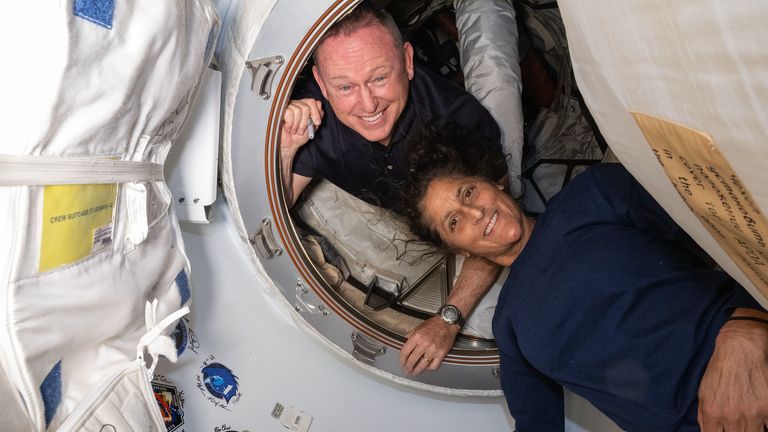Two astronauts who have been stuck on the International Space Station (ISS) for over a month are talking to reporters for the first time on Wednesday afternoon.
Commander Barry “Butch” Wilmore and pilot Sunita “Suni” Williams blasted off on 5 June in Starliner’s first mission to orbit carrying the astronauts.
After docking on the ISS, the NASA astronauts were supposed to stay in orbit for eight days.
However, Boeing’s Starliner has been plagued by problems and its return to Earth has been repeatedly delayed.
During their extended stay on the ISS, the astronauts have been forced to take shelter in the spacecraft when a Russian satellite exploded nearby.
However, if they needed to evacuate, Starliner may have struggled to get away from the space station.
The spacecraft’s propulsion system is faulty, which is how it backs the capsule away from the ISS and positions itself to dive through Earth’s atmosphere.
Many of Starliner’s thrusters have overheated when fired and leaks of helium, used to pressurise the thrusters, appear to be connected to how frequently they are used, according to NASA’s commercial crew manager Steve Stich.
How stuck are they?
Boeing insists the astronauts are “not stuck” and says “there’s no increased risk when we decide to bring Suni and Butch back to Earth,” according to Mark Nappi, manager of Boeing’s Commercial Crew Program.
Starliner is able to spend 45 days docked on the ISS, or up to 72 days at a push, relying on backup systems.
If the astronauts still couldn’t use it to come back to Earth, they could hitch a lift with other crews up there.
Russia’s Soyuz spacecraft is due to take three people back to Earth in September and SpaceX’s Crew Dragon Capsule should return in August.
Butch and Suni aren’t in “any danger”, according to Mr Nappi and also aren’t even very stuck by space station standards.
Last year, NASA’s Frank Rubio landed back on Earth after the longest continuous spaceflight by an American, spending a whopping 371 days in orbit.
His return was delayed for six months because of a coolant leak on his spacecraft.
Between 1994 and 1995, Russian cosmonaut Valeri Polyakov spent a record-breaking 437 days on the Russian-owned Mir space station, although he always intended to be up there for a long time.
Starliner delays
Starliner’s problems come after years of delays and failed launches.
In 2014, NASA asked both SpaceX and Boeing to develop commercial crew capsules, but while SpaceX successfully started shuttling astronauts in 2020, this trip was Boeing’s first crewed launch.
Boeing’s losses on the Starliner programme are believed to be around $1.5bn (£1.2bn).



























